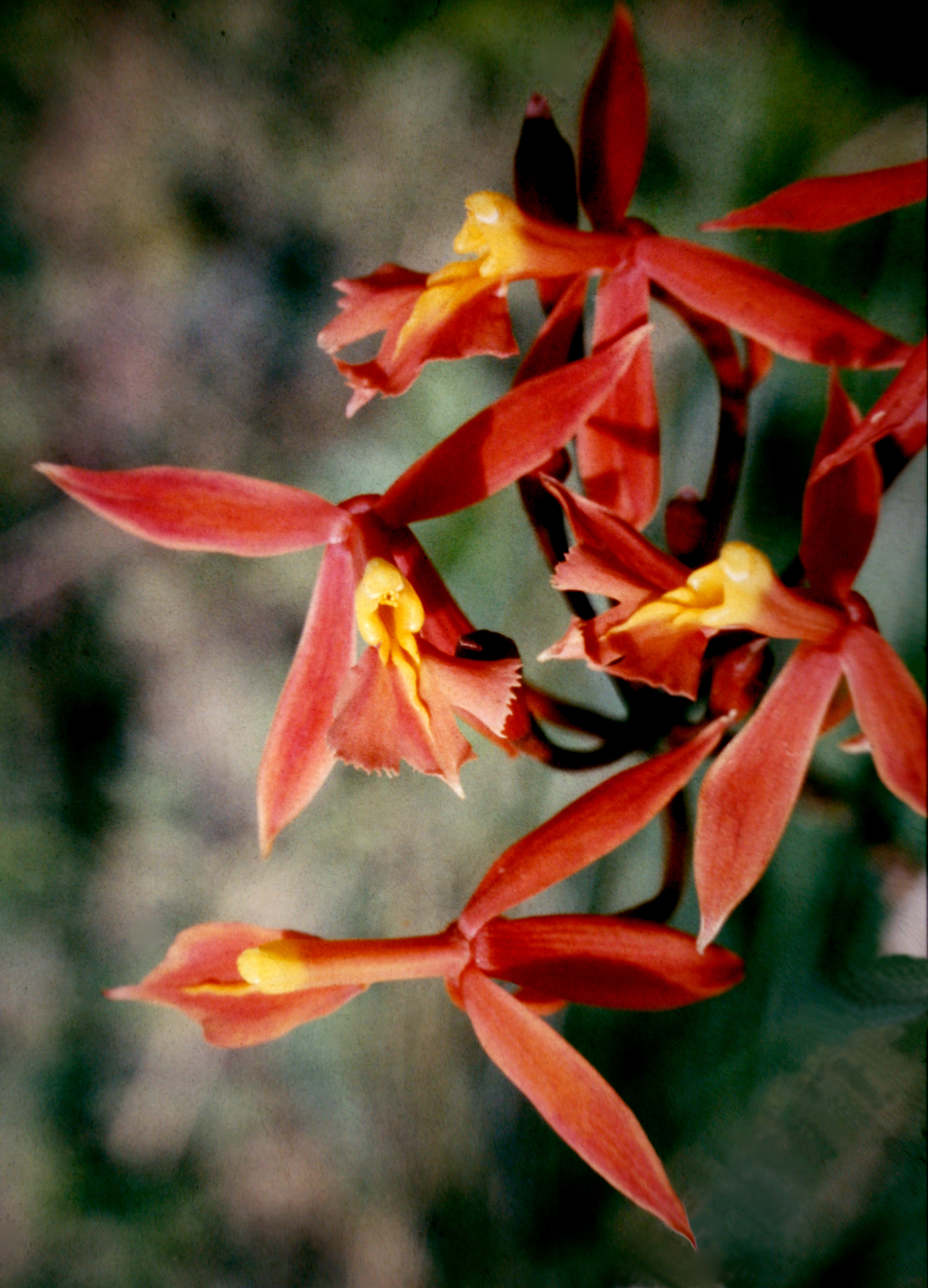- Epidendroideae
Taxobox
name = Epidendroid orchids

image_caption = "Epidendrum schomburgkii"
regnum =Plant ae
divisio = Magnoliophyta
classis = Liliopsida
ordo =Asparagales
familia =Orchidaceae
subfamilia = Epidendroideae
subdivision_ranks = Tribes
subdivision = See text.
synonyms =VandoideaeThe Epidendroideae, or epidendroid
orchid s, are asubfamily of the orchid family (Orchidaceae ).The former subfamily
Vandoideae has become a specialised clade within a more broadly defined Epidendroideae.This is the largest subfamily, larger than all the other orchid subfamilies together. It comprises more than 15,000
species in 576 genera.Most are tropical
epiphyte s (usually withpseudobulb s), but some are terrestrials and even a fewmyco-heterotrophs , which areparasitic uponmycorrhizal fungi .They typically contain the remaining orchids with a single, fertile
anther ( = monandrous), which is also fully incumbent ( = strongly convex) to suberect (= ascending towards the edges). The anther form arises from column elongation or, as in the vandoids, from early anther bending. The incumbent anther forms a right angle with the column axis or is pointed backward in many genera.Most have hard pollinia, i.e. a mass of waxy
pollen or of coherent pollen grains. The pollinia are withcaudicle andviscidium or without.The stigma are entire or 3-lobed; a beak is present. The apical part of the muiddle stigma lobe forms a stipe ( = pollinium stalk).
The ovary is 1-locular.
The leaves are distichous or spiraling, growing on thickened stems.
The Epidendroideae are difficult to classify. They have been divided in “lower epidendroids” and “higher epidendroids”.
Description
Epiphytes are plants which grow above the ground, that grow on top of other plants. They are not planted in the soil and are not parasitic (i.e. they are not a threat to other plants). By growing on other plants, the epiphytes can reach to the light better or where they can avoid struggling for light. Many mosses and lichens are epiphytes, as are approximately 10 per cent of all seed plants and ferns. Epiphytes are common in some groups of plants, such as ferns, mosses, lichens and algae. Over half of the 20,000 species of orchids are epiphytes. Epiphytes are the beginning process of strangler figs.
Habitat
Most epiphytic seed plants and ferns are found in tropical and subtropical rainforests because they need high humidity to survive. The areas which most epiphytes grow are the montane rainforests. Epiphytes are found in the canopy of a tree in the rainforest which is a layer of leaves and branches. The trees provide many habitats with different conditions of temperature, contact and light. In temperate places, epiphytes are most common in moist forests, such as the rainforests in Queensland.
Adaptation
Epiphytes are not used to droughts as other flora, because they don’t have access to the ground, but they still have some mechanisms to help them survive. Many epiphytes show CAM (crassulacean acid metabolism), which involves taking in CO2 at night, and photo-fixing it during the day with closed stomata to reduce water loss by transpiration. They also contain absorptive plants that are capable at quickly taking up water when it is available and preventing drought when water is scarcer. CAM can be impeded by higher night-time temperatures, dehydrated tissues, and high saturation deficits in the surrounding air, which lower the "stomata conductance" of the epiphytes, reducing the CO2 uptake, which in turn reduces growth and reproduction and even induces carbon loss. Higher temperatures, strain on evaporation, and contact to light cause CAM-idling, which is the epiphyte closing its stomata when it becomes stressed, that brings down the range of habitats a species can inhabit. Epiphyte species work biomasses are much more sensitive to different relative moisture levels than other plants.
The higher epidendroids are partly
monophyletic and partlypolyphyletic (tribesArethuseae andEpidendreae ).
*Maxillarieae
*Cymbidieae
*Vandeae
*Epidendreae II
*Calypsoeae (problematic, difficult to classify)
*Dendrobieae
*Malaxideae
*Podochileae
*Epidendreae I
*Arethuseae
*Coelogyneae This classification has a rather ephemeral nature. Changes are likely to occur as new data become known.
External links
* [http://www.amjbot.org/cgi/content/full/86/2/208 A phylogenetic analysis of the Orchidaceae - evidence from "rbcL" nucleotide sequences]
* [http://www.flmnh.ufl.edu/orchidatol/pd/orchidATOLpd.htm Orchid Tree : a phylogeny of epiphytes on the tree of life]
Wikimedia Foundation. 2010.
